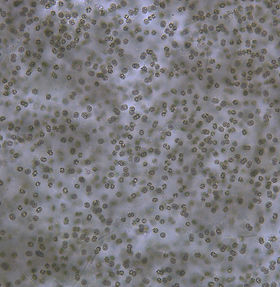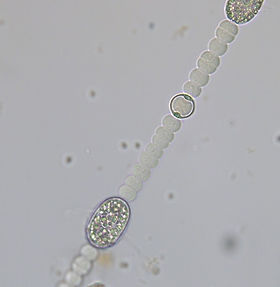ALGAL TOXINS
Cyanobacteria or blue-green algae, which are typically dominant in
eutrophic waters (nutrient-rich), can produce toxins. Cyanotoxins are
produced by cyanobacteria, and include a wide variety of biotoxins
that affect multiple organs and tissues in wildlife. Cyanotoxins have
become more common in modified landscapes across the United
States with highly variable toxin production between and even within
cyanobacterial species, across different locations and timeframes, resulting in unpredictable impacts to wildlife associated with cyanobacterial blooms. Presence of microcystin and other cyanotoxins (commonly produced by Microcystis spp. and Cylindrospermopsis spp.) in reservoirs, lakes and rivers represent a potential significant risk to wildlife and public health. Reported health problems attributed to drinking water contaminated with cyanotoxins have increased in recent years.

BSA Environmental Services provides multiple methods for identification and enumeration of potentially toxigenic (PTOX) cyanobacteria species and provides detection and quantification of toxins in biological systems using multiple methods, allowing our clients to utilize the most appropriate test based on their budget and for the specific location or project of interest. New detection methodologies have been developed in recent years, including the use of liquid chromatography-mass spectrometry (LC-MS/MS) which is a
a powerful and highly specific technique used in confirmatory analysis to accurately identify and quantify specific variants of microcystin and nodularin. We provide exceptional cyanobacterial toxin analysis services utilizing LC-MS/MS with results that can be relied upon to help our government and commercial clients effectively monitor drinking and recreational water quality and make timely management decisions.

BSA provides LC-MS/MS testing by USEPA approved
Standard Methods 544, 545, and 546 for the detection of
microcystins and nodularins, anatoxin-a, cylindrospermopsin,
saxitoxins (paralytic shellfish toxins), as well as lyngbyatoxin-a, apylsiatoxin/debromoaplysiatoxin. Currently, the microcystin
suite confirmatory analysis includes 14 variants of microcystin.
Anatoxin-a and homoanatoxin-a as well as cylindrospermopsin are
analyzed using Method 545 by LC-MS/MS. Saxitoxin is analyzed using
LC/MS/MS for 6 toxin variants. Limits of detection for all toxins is <1 ppb or 1 microgram/L. Instrumentation includes an Agilent HP1200 HPLC equipped with a 6410 MS/MS.
METHODS

BSA provides ELISA testing by USEPA approved Standard Method 546 for the detection of microcystins, anatoxin-a, cylindrospermopsin, and saxitoxins (paralytic shellfish toxins). BSA uses ELISA kits provided by Abraxis and a Cyanotoxin Automated Assay System (CAAS), an automated, microtiter plate format analyzer for quantitative determination of anatoxin-a, cylindrospermopsin, microcystins, and saxitoxins. The analyzer is computer controlled and capable of automating all the steps of both ELISA assays including fluid handling, plate mixing, incubation/timing, optical reading, calculations and reports. Our CAAS system produces rapid, reliable, and consistent results, detecting saxitoxin values as low as 0.02 ppb,
cylindrospermopsin and microcystin values as low as 0.05 ppb,
and anatoxin-a as low as 0.15 ppb.
BSA performed the microcystin analyses for the
2012 National Lakes Assessment.

SERVICES
-
Microcystins
-
Cylindrospermopsin
-
Saxitoxin / PSP
-
Anatoxin-a
-
Anabaenopeptins
-
ASP
-
BMAA
-
Brevetoxins
-
Nodularins
-
Prymnesium toxins